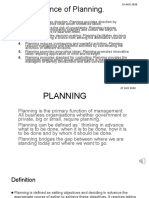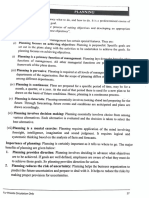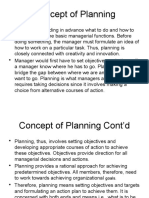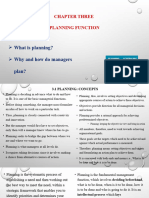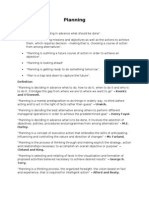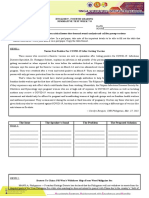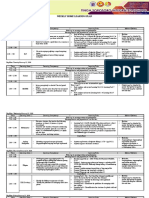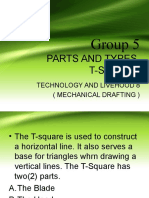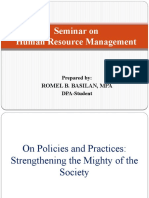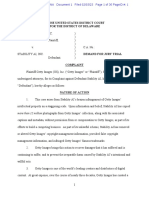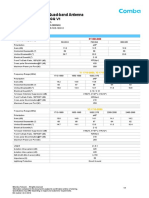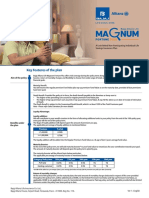0% found this document useful (0 votes)
134 views3 pagesPlanning and Control Management Functions
The document discusses the planning function of management. It defines planning as thinking in advance about what needs to be done, when, how, and by whom. Planning sets objectives for a time period and develops courses of action to achieve objectives. Planning contributes to objectives, provides direction, reduces risks and waste, and promotes innovation. However, planning can also lead to rigidity and not work in dynamic environments. External factors like natural disasters or policy changes can also limit planning. The basic steps of planning include determining objectives and alternatives, evaluating alternatives, preparing derivative plans, determining timing and participation, and following up on the proposed plan.
Uploaded by
Juan Jaylou AnteCopyright
© © All Rights Reserved
We take content rights seriously. If you suspect this is your content, claim it here.
Available Formats
Download as DOCX, PDF, TXT or read online on Scribd
0% found this document useful (0 votes)
134 views3 pagesPlanning and Control Management Functions
The document discusses the planning function of management. It defines planning as thinking in advance about what needs to be done, when, how, and by whom. Planning sets objectives for a time period and develops courses of action to achieve objectives. Planning contributes to objectives, provides direction, reduces risks and waste, and promotes innovation. However, planning can also lead to rigidity and not work in dynamic environments. External factors like natural disasters or policy changes can also limit planning. The basic steps of planning include determining objectives and alternatives, evaluating alternatives, preparing derivative plans, determining timing and participation, and following up on the proposed plan.
Uploaded by
Juan Jaylou AnteCopyright
© © All Rights Reserved
We take content rights seriously. If you suspect this is your content, claim it here.
Available Formats
Download as DOCX, PDF, TXT or read online on Scribd
/ 3







